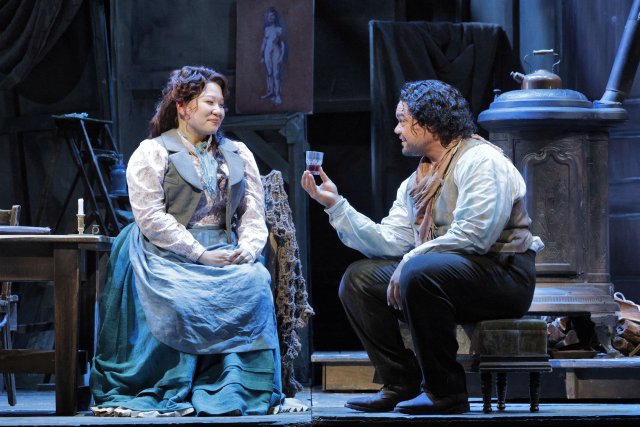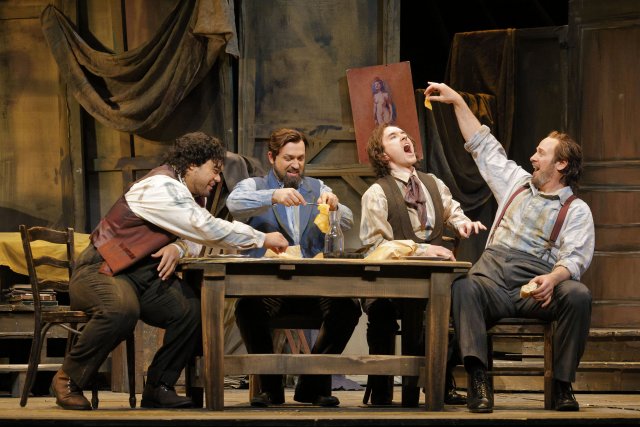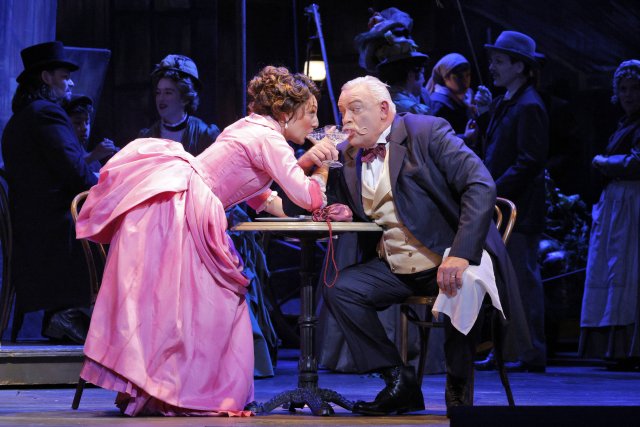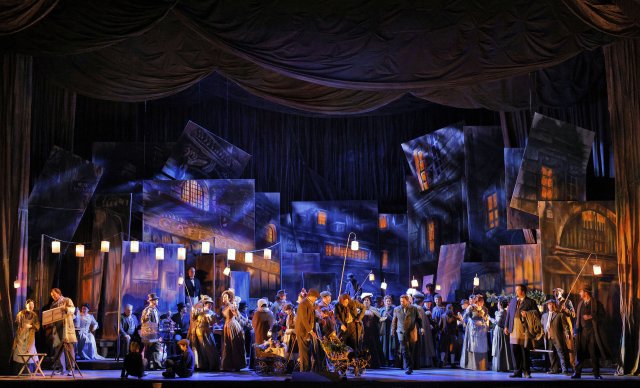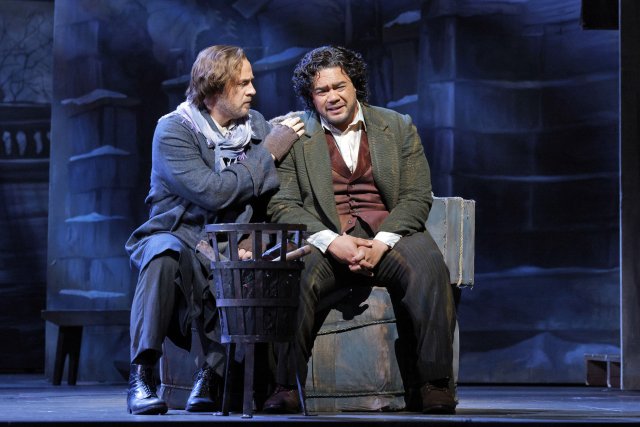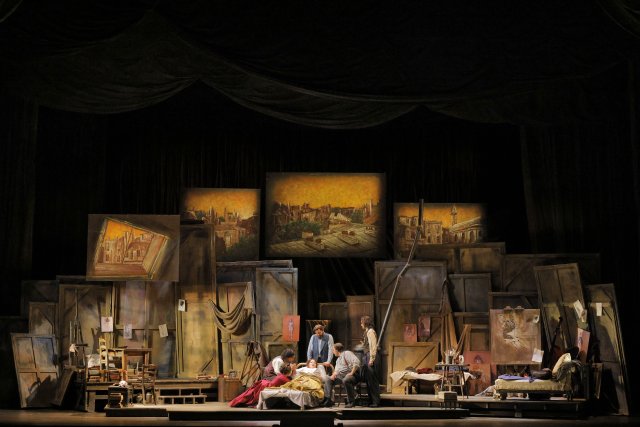La Boheme
San Francisco Opera's Record 46th Production
By: Victor Cordell - Jun 09, 2025
Always among the most performed of all operas worldwide, perhaps none is more beloved than Giacomo Puccini’s La Bohème. What is not to love? It contains some of the most beautiful music ever written; its characters and situations have broad appeal; its bittersweet comedy endears; and its drama is heart rending. San Francisco Opera reprises this timeless and wonderful warhorse, its most frequently produced, to great success.
The title character is Mimì, a lovely but sickly maiden, who falls in love with poet Rudolfo on first meeting in their freezing tenement when she loses the flame to her candle and then her apartment key. The troika of truly beautiful musical highlights that follows would alone make a trip to the opera worthwhile.
As the two crawl on the floor looking for the key, Rudolfo opens with “Che gelida manina” (“What a cold little hand”) and tells her about himself. She then shares her story with “Mi chiamano Mimì” (“My name is Mimi”). And finally, they express their newfound love in the duet “O soave fanciulla” (“Oh, lovely girl”).
Local favorite Pene Pati performs Rudolfo and carries the part with charismatic aplomb and a gentle tenor voice with subtle dynamics that embrace the emotion of his love. Karen Chia-Ling Ho as the delicate Mimì possesses a warm and uncommonly deep, dark timbre for a soprano, but she has no difficulty soaring to the heavens at the finale of “O soave fanciulla,” which unfortunately is barely audible as the couple have moved offstage near the completion of the duet.
A secondary love duo involves the often conflicted painter Marcello, portrayed by the smooth and authoritative baritone Lucas Meacham, with fashionable, flirtatious, and flighty Musetta, sung by bold and bright soprano Andrea Carroll. In an unusual twist, the central character of Act II is given over to the second female lead, Musetta. At the heart of her self-reverential vanity is her widely known and loved aria “Quando me’n vo’” (“When I walk”), which always lights up an audience. While Musetta may be taken as a superficial woman, a closer look suggests a streak of independence that may be considered an early state of feminism.
Although the melodies in Acts I and II are the most memorable, the final two acts hold their own. Considerable new melodic music is introduced, including a sequence with Rudolfo and Mimì that structurally echoes the three love songs in Act 1. The doleful arias, “Addio” from Mimì and "Vecchia zimarra” (“Old coat”) from Colline (Bogdan Talos) are noteworthy as are a quartet among the artists and a split trio in which Mimì grasps that she’s dying.
What is pronounced however is the recurrence of themes from the earlier acts. While Wagner promoted leitmotifs that could be subtle and comprised of only three or four notes, the repeat themes in La Bohème could be characterized as heavymotifs, as whole phrases are used multiple times. Happily, they are beautiful melodies.
Along with the love stories, the other thread, which has considerably more depth, is the relationship among the four Bohemian artists who share lodgings in the garret of the tenement – Colline the philosopher, Schaunard the musician, and the two already mentioned. As not-yet-successful artists, they lead hand-to-mouth but gratifying existences. This is clearly a commentary on the richness of life steeped in the arts rather than one given over to the almighty dollar (or franc, as it were).
But more than that, the friends exhibit comradeship. To pleasant laughter from the audience, they make light of their paltry existence and demonstrate generosity by sharing food bought with their meager earnings. More importantly, they sacrifice. As Mimì is dying, others in the group sell their pitiful assets to give Mimì comfort. In the depth of winter, Colline even sells his treasured overcoat.
The production is at once handsome and efficient, heavily reliant on painted panels dropped from the fly in two acts with swiveled stage used to deliver genuine scenery and props in the other two. The lighting level is low overall, which is realistic for the circumstances. Outdoors at the Café Mamou in Act II, lanterns handsomely festoon the stage. While very attractive, the low light does dim the artists on stage and seems contrary to the brightness of the children’s choruses and the festive mood for that act.
Conductor Ramón Tebar leads orchestra and singers well. Together with Director Katherine M. Carter, their excellent guidance of timing and pacing, delivered by the singers, extract humor and empathy for the memorable characters. Collectively, working from a magnificent score, the artists of San Francisco Opera provide an exemplary evening of culture.
La Bohème, composed by Giacomo Puccini with libretto by Luigi Illica and Giuseppe Giacosa, based on Henri Murger’s autobiographical Scènes de la Vie de Bohème, is produced by San Francisco Opera and plays at War Memorial Opera House, 301 Van Ness Avenue, San Francisco, CA through June 21, 2025.

